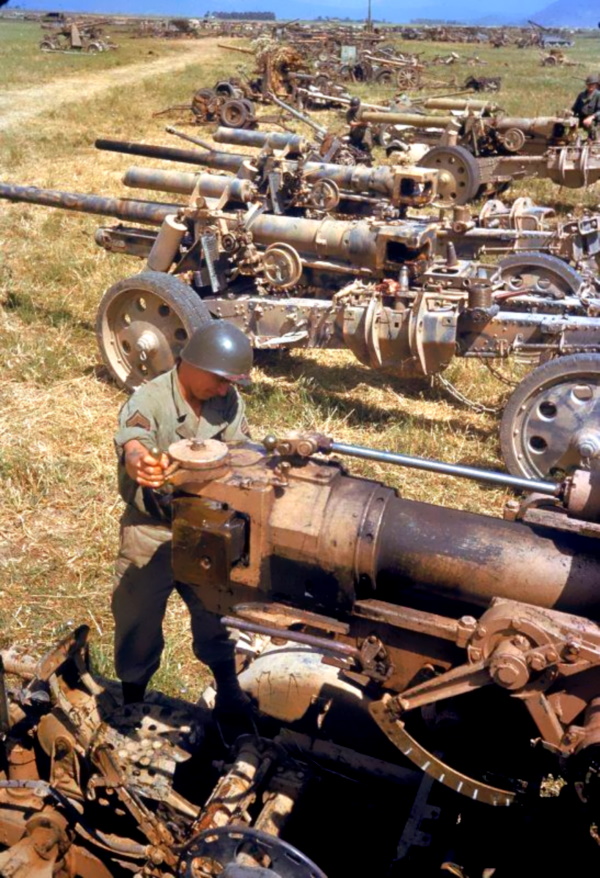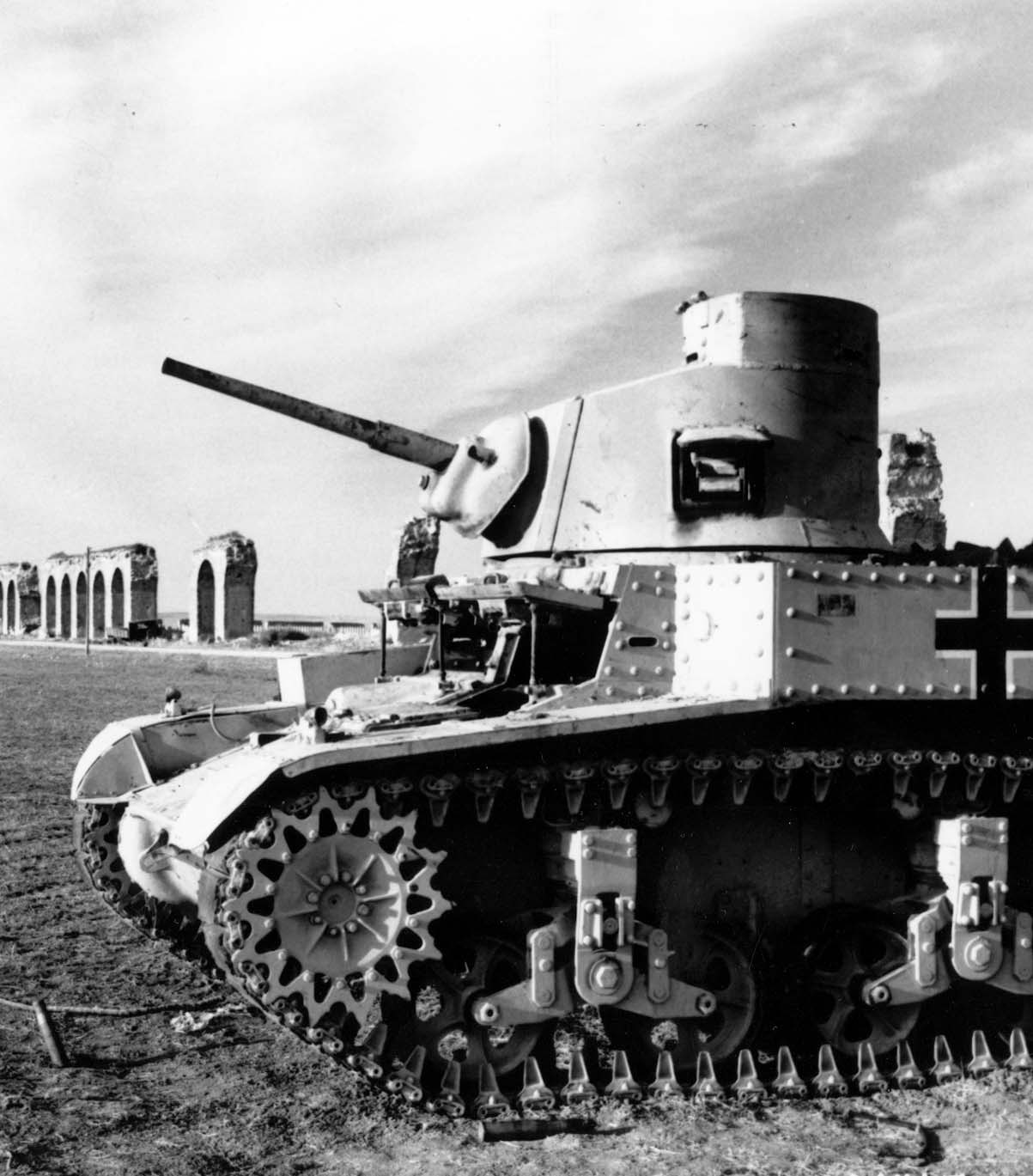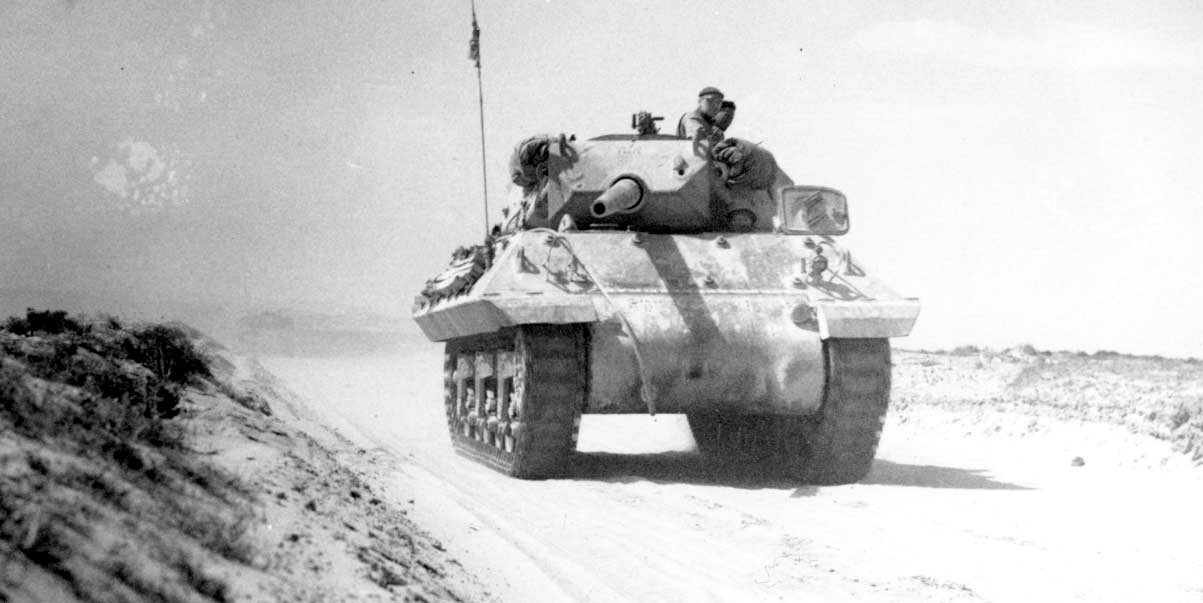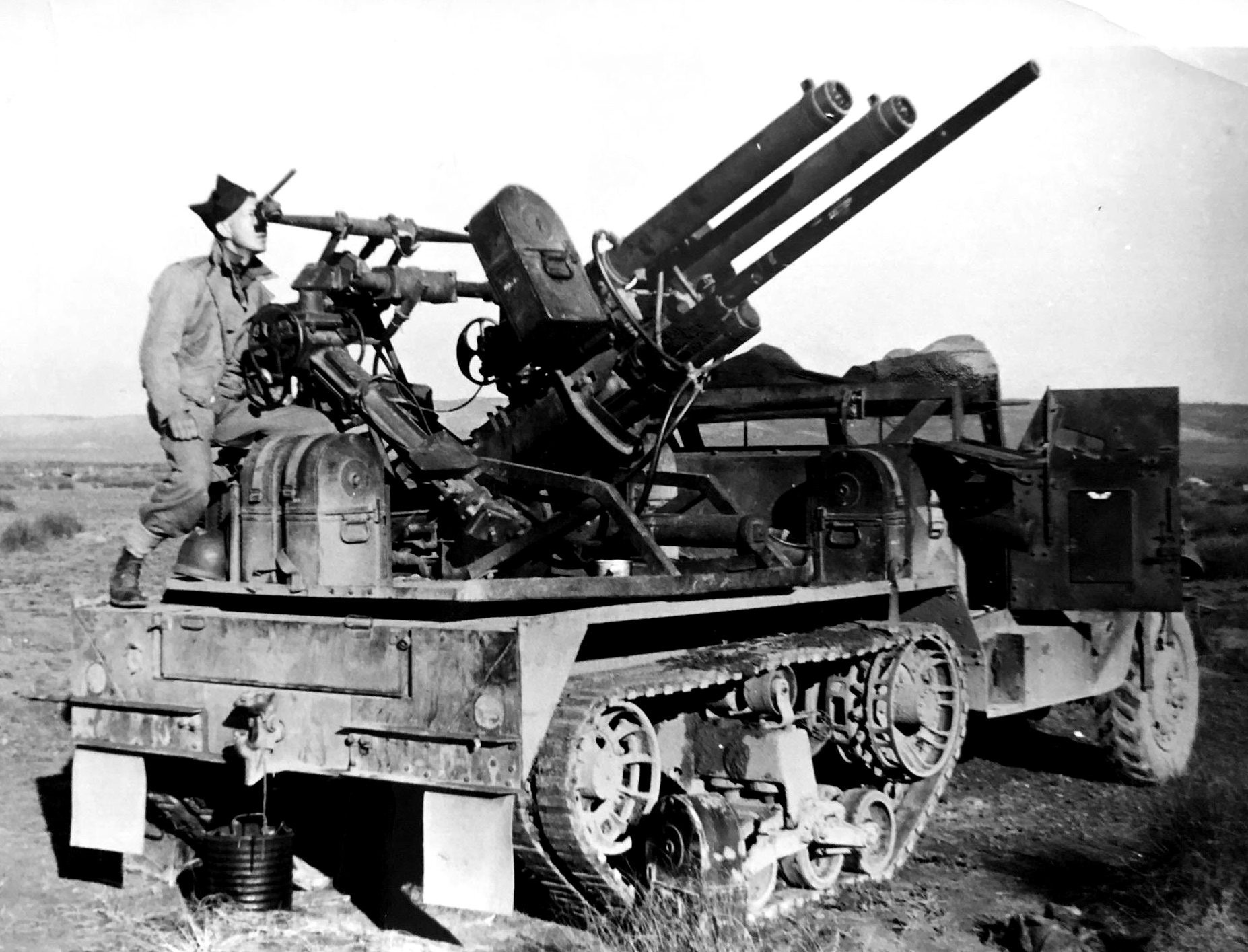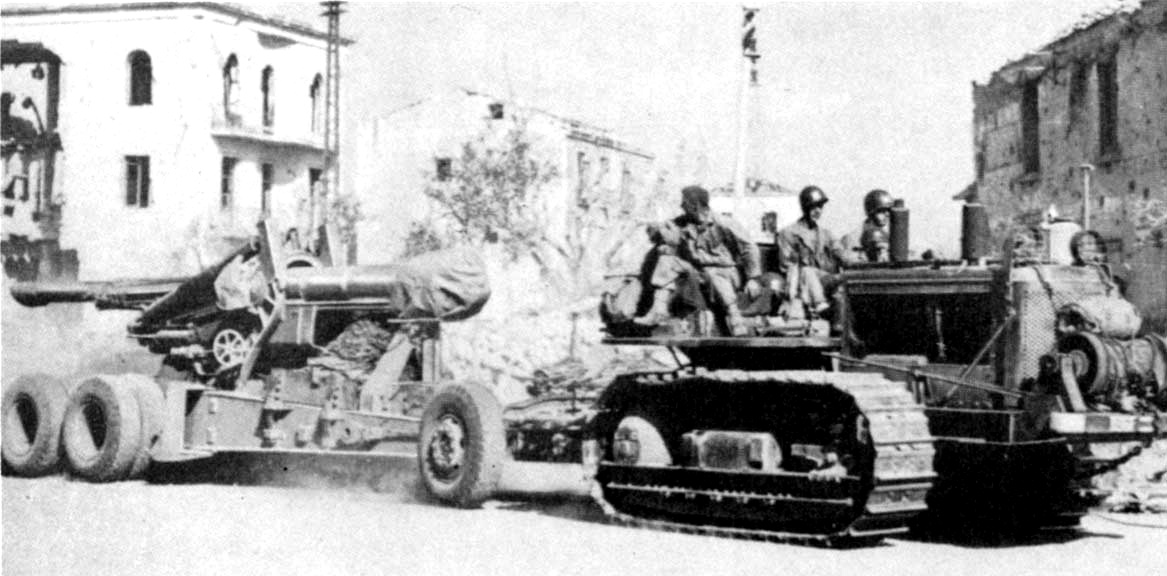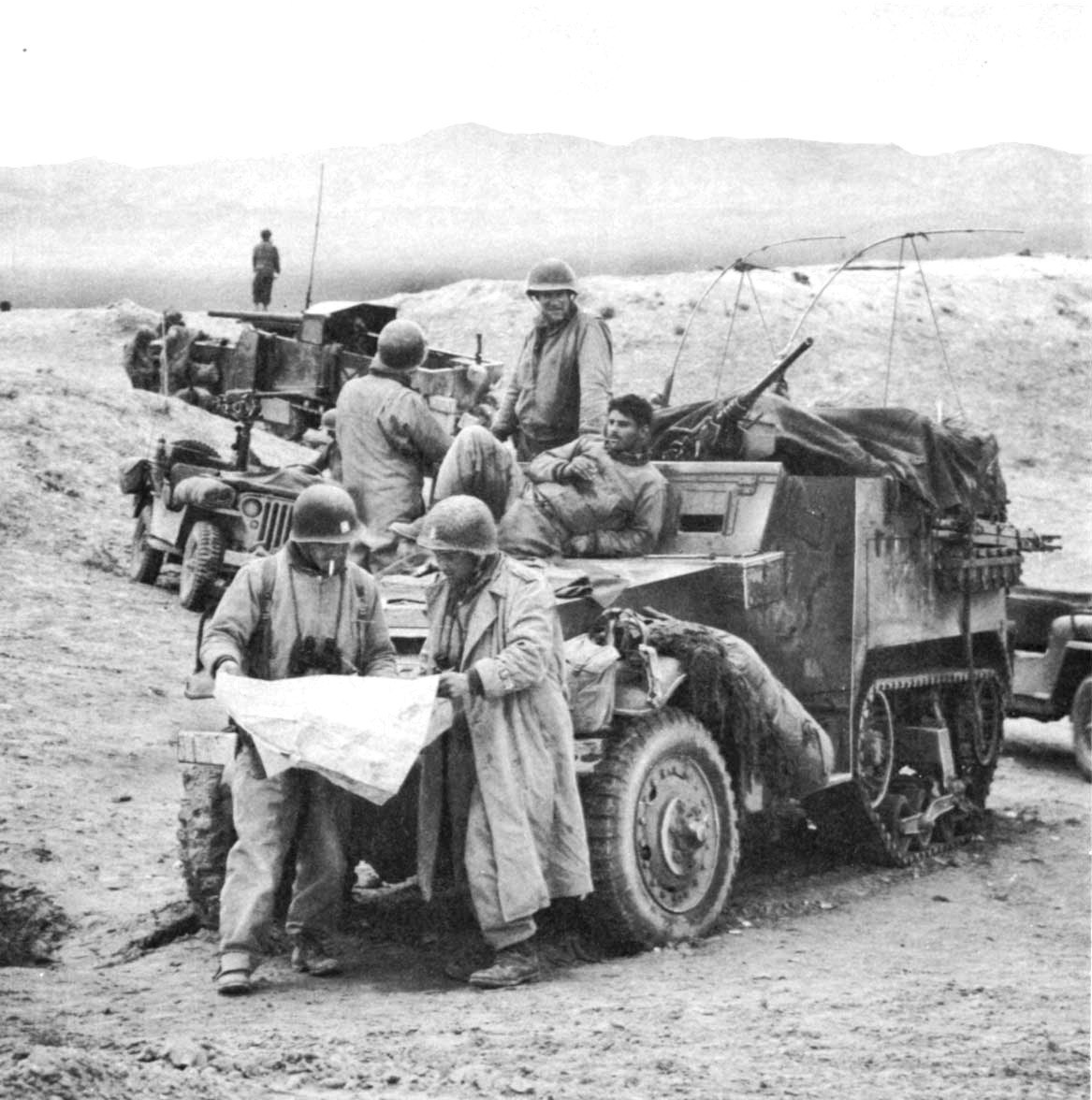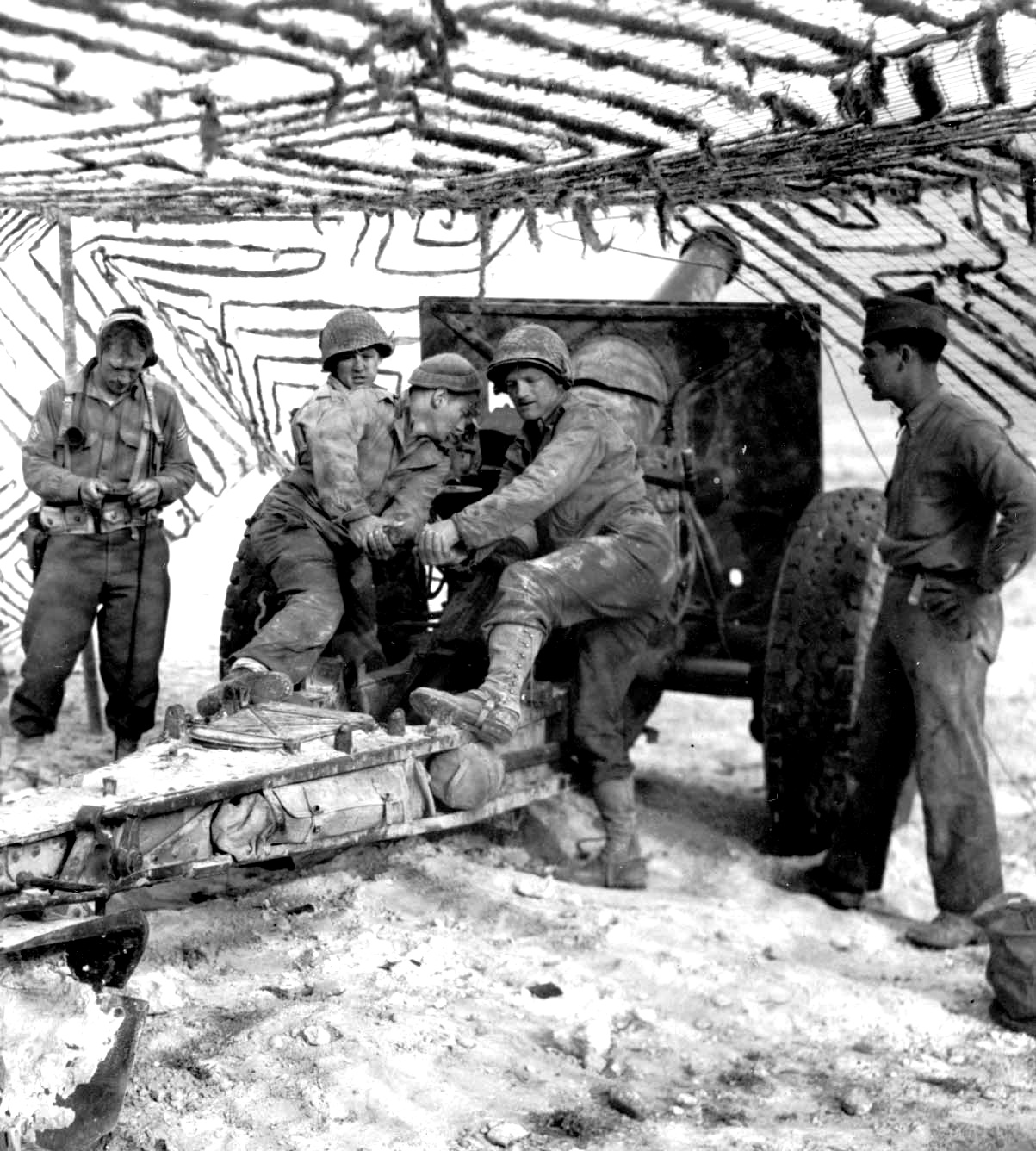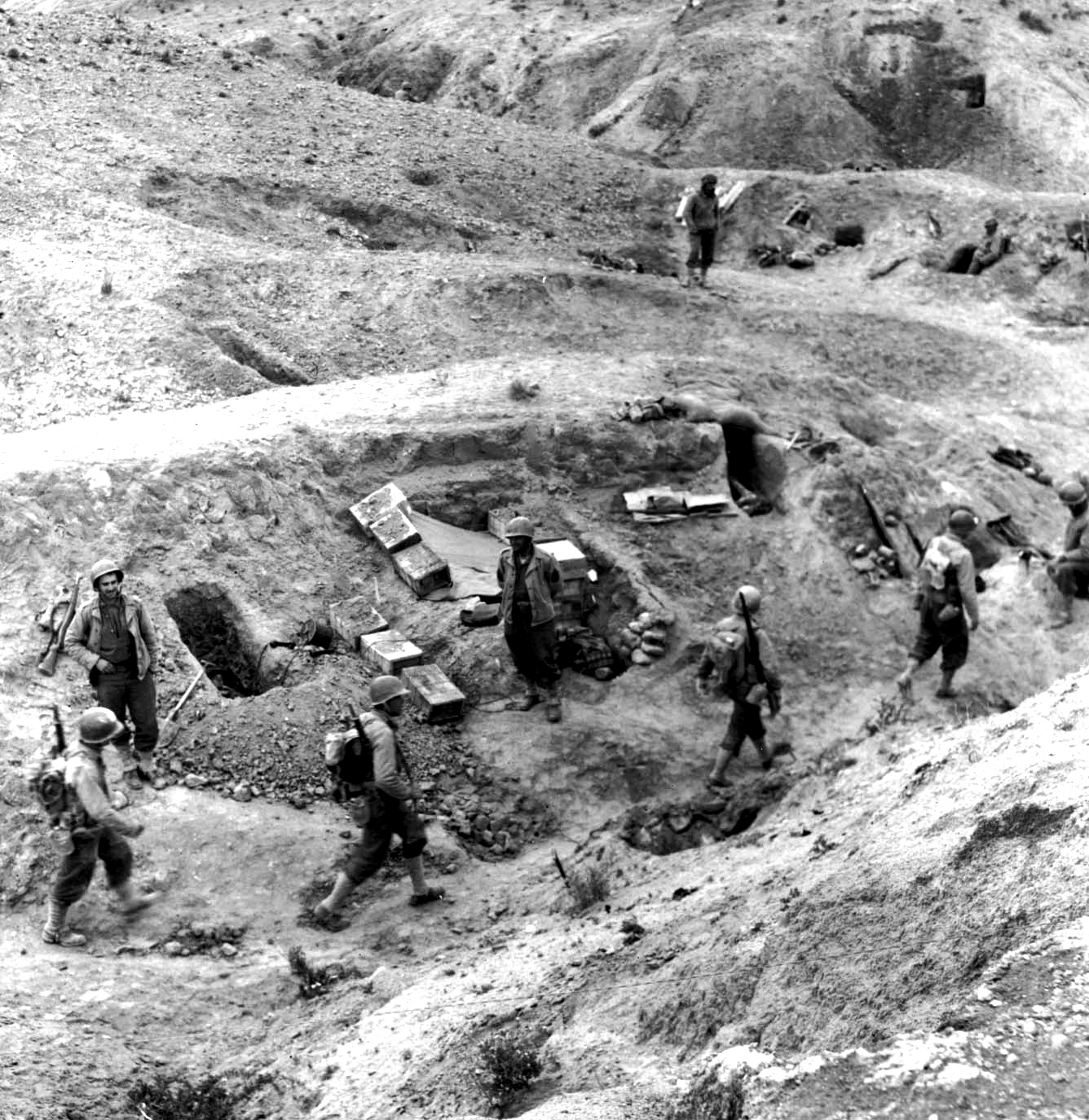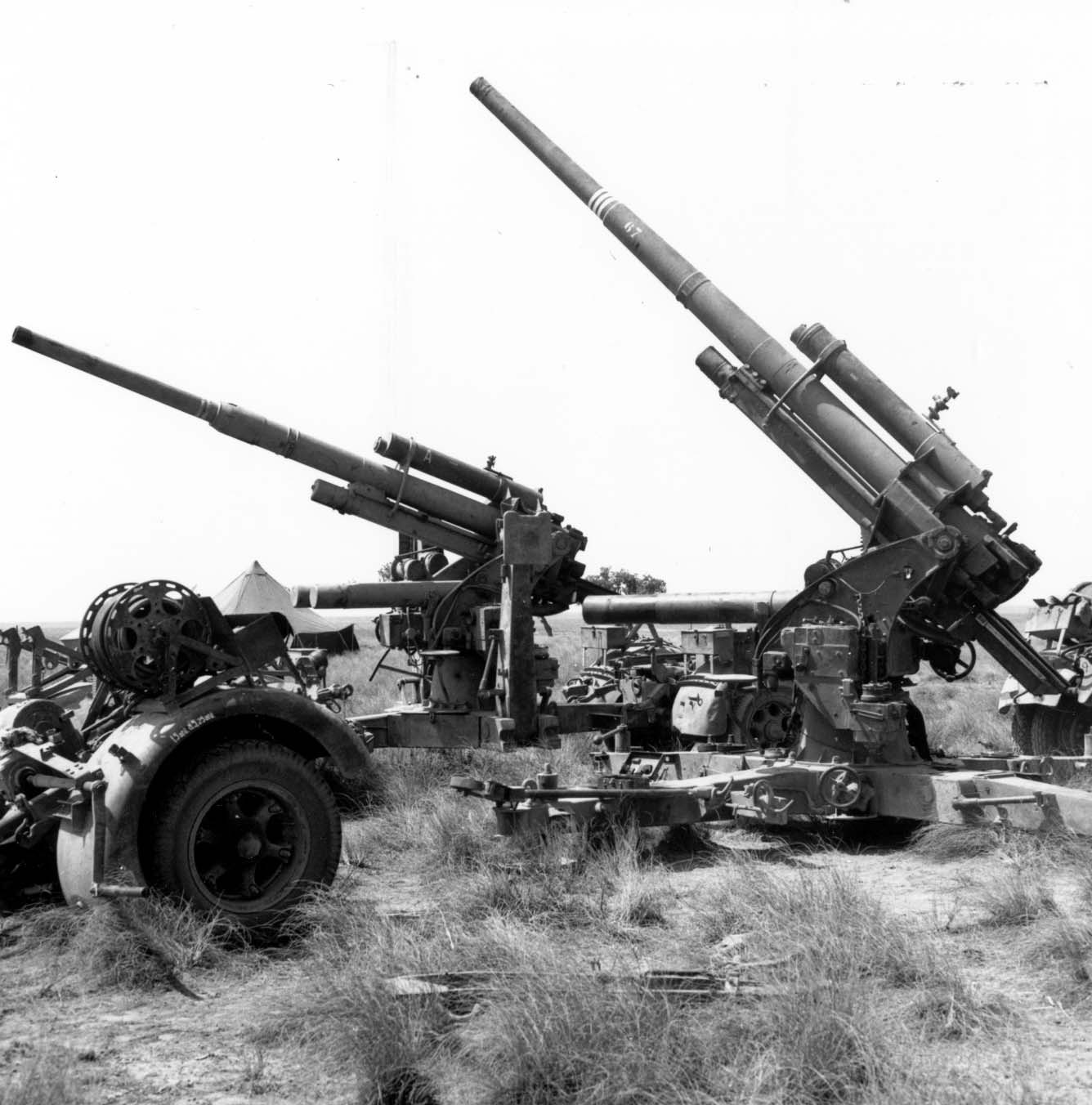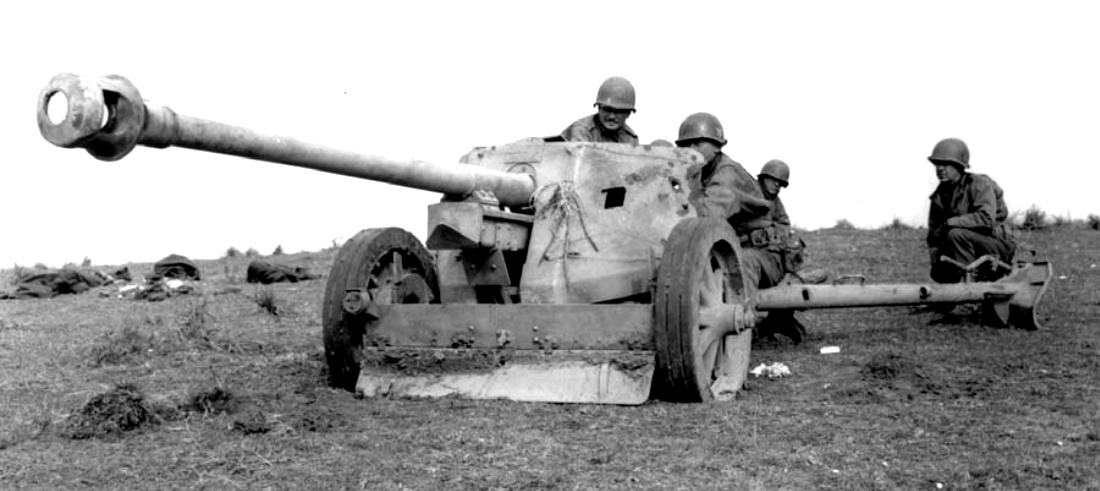US Light Tank, captured by the Germans. The main weapon of this tank was the 37-MM gun. Its armor was light and riveted together as was the armor on the first models of the medium tanks. A glancing shell could rip off the outside heads of the rivets and send the rivets ricocheting through the interior of the tank with the velocity of bullets. Note the German markings on this vehicle. (US Light Tank Grant M-3)
(Above and Below) US Tank Destroyers. The combination of a Dodge truck and one 37-MM antitank gun (above) could not stand up against any type of armor the enemy had. The tank destroyer (below) was introduced in Tunisia after the Kasserine Passfight. The chassis was that of the M-4 Sherman tank, the gun has a higher velocity than that of comparable Allied tank guns. The first time it saw action was in the vicinity of Maknassy during the middle of March 1943. The village of Maknassy was occupied by US forces on March 22, 1943.
(Above and Below) US Half-Track used as a Mobil AAA Unit. AAA units like this cut down the effectiveness of the Stuka dive bombers. Half-tracks proved practical for many purposes not originally intended. First designed as a cavalry scout car, it became, with modifications, a gun carriage mounting anything from a 37-MM cannon to a 105-MM howitzer, a personnel carrier, an ambulance, or just a truck. The standard half-track had armor protecting the crew. Multiple-gun motor carriage with 37-MM cannon and .50-caliber water-cooled Browning machine gun.)
Long Tom or 155-MM rifle towed by the standard caterpillar. This was the heaviest piece of Allied artillery used during the Tunisia Campaign.
US Armor near El Guettar in Central Tunisia. In the foreground is a radio-equipped half-track personnel carrier and in the background a 75-MM gun motor carriage M-3. The latter, lightly armored, was an antitank vehicle with great mobility The enemy developed a healthy respect for the hit-and-run tactics of US forces using this weapon. The vehicle would wait until enemy armor came within range get off as many shells as possible, and withdraw. US forces pushed eastward from the Gafsa area to draw enemy units from the Mareth Line then under attack by the British. On March 23, 1943, severe fighting broke out southeast of El Guettar, and a German armored division was repulsed by US forces with heavy tank losses to the enemy.
Loading a Howitzer. This was the 1918 Schneider model equipped with a high-speed carriage. The action shown above took place during the enemy counterattack starting on March 23, 1943, east of El Guettar. Although the enemy attack was stopped, the US advance toward the coast halted for several days. During this action, Allied fighters and light bombers accounted for much damage done to enemy armor and other vehicles along the Gafsa–Gabès road east of El Guettar. (155-MM Howitzer)
Infantry near El Guettar. After the enemy attack in this area on March 23, the front became almost stabilized until the British Eighth Army broke through Oued el Akarit defenses along the coast north of Gabès on the night of April 6–7. The junction between the forces fighting in Tunisia and the British Eighth Army from the Middle East took place on the Gafsa–Gabès road on April 7, when a US armored reconnaissance unit made contact with elements of the British army. The British Eighth Army had started its drive westward from El Alamein in Egypt on the night of October 23–24, 1942, and when the junction was made had traveled about 1500 miles.
The Famous German Eighty-Eight. The original weapon, an Austrian 88-MM cannon, was used in World War I. Restrictions imposed by the Allies after that war limited German experimentation on conventional offensive artillery but not on defensive artillery such as antiaircraft types (in the photograph). With different sets of aiming fire instruments, this antiaircraft gun could be used as an antitank gun or a conventional piece of artillery. It was tested as an antiaircraft gun under battle conditions during the Spanish Civil War in 1936. Encountered throughout the war in increasing numbers, it was probably the most effective all-around piece of artillery the Germans had. (left) 8.8-cm. Flak 36; (right) 8.8-cm. Flak 18.
German Antitank Guns. These guns, effective against Allied armor, fired armor-piercing shells loaded with high-explosive fillers designed to burst inside the armor and set the tank on fire. Antitank gun (above) could penetrate the armor of any Allied tank, front, side, or rear. Both US and British armor-piercing shells were solid and did not fire the tanks; thus the Germans were able to salvage damaged armored equipment to a greater extent than the Allies. It was not until well into the Italian campaign that armor-piercing shells equipped with fuzes and high-explosive fillers became available to Allied forces. (above) German antitank gun, 7.5-cm Pak 40; (bottom) German antitank gun, 5-cm Pak 38.
